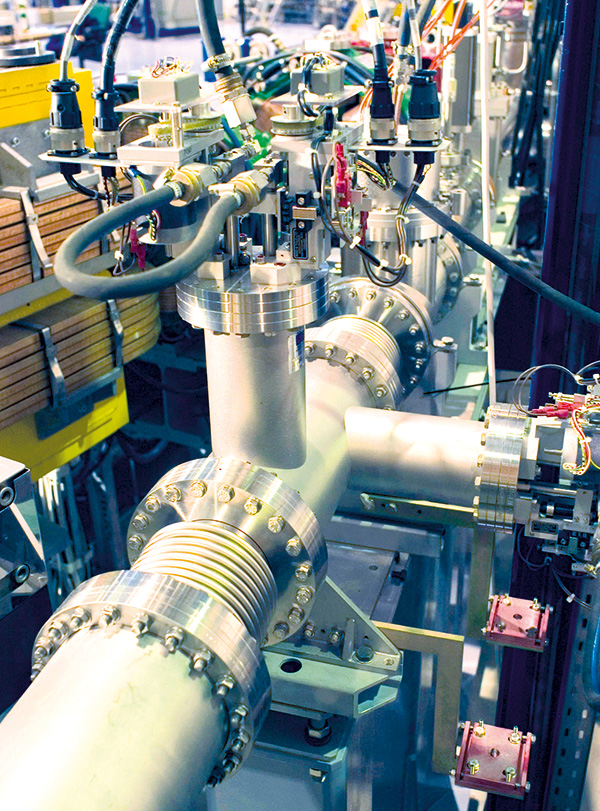Accelerator
At Campus North at KIT a 110-m 2.5-GeV electron storage ring is located with a 53-MeV microtron and 500-MeV booster. The racetrack microtron accelerates the initially 90-keV electrons to relativistic kinetic energies of 53 MeV, which are then injected into a booster synchrotron. In the storage ring in the booster synchrotron, electrons are further accelerated to 500 MeV before final injection into the 110-m electron storage ring. Finally, the electron's kinetic energy is ramped from 0.5 GeV to a typical value of 2.5 GeV for the generation of mainly X-ray photons or various other energies are set during machine physics experiments. The latter include the study of novel operation modes like low-alpha operation. During low-alpha operation coherent synchrotron radiation (CSR) in the terahertz (THz) frequency range is investigated. The injector has a repetition rate of 1 Hz. Typically injection into the storage ring takes place once or twice on a work day. The 110-m electron storage ring is named Karlsruhe Research Accelerator (KARA). For details on energy, injection, lifetime, and beam current of the electron storage ring see current and past .
The storage ring can be filled with an arbitrary, operator-defined electron bunch pattern ranging from a single-bunch (1) to multiple bunches (up to 184) spaced by 368 ns to 2 ns, respectively. Resulting synchrotron radiation leads to photon pulses with repetition rates from 2.7 MHz (1 bunch), 5.4 MHz (2 bunches), ..., to 500 MHz (184 bunches). The storage ring is equipped with state-of-the-art and advanced ps and fs electron and photon beam diagnostics. A selection of features are listed in the following:
- Large electron energy range (0.5 – 2.5 GeV)
- Adjustable electron bunch lengths (50 ps down to a few ps)
- Arbitrary, operator-defined electron bunch filling patterns
- Flexible magnet lattice, low-alpha optic and superconducting insertion devices
- Synchronized, fast, transversal and longitudinal beam diagnostics
- Novel single-shot bunch profiling, ps and fs diagnostics at high repetition rate
- In-house developed detector systems with bunch-by-bunch and turn-by-turn multichannel readout

